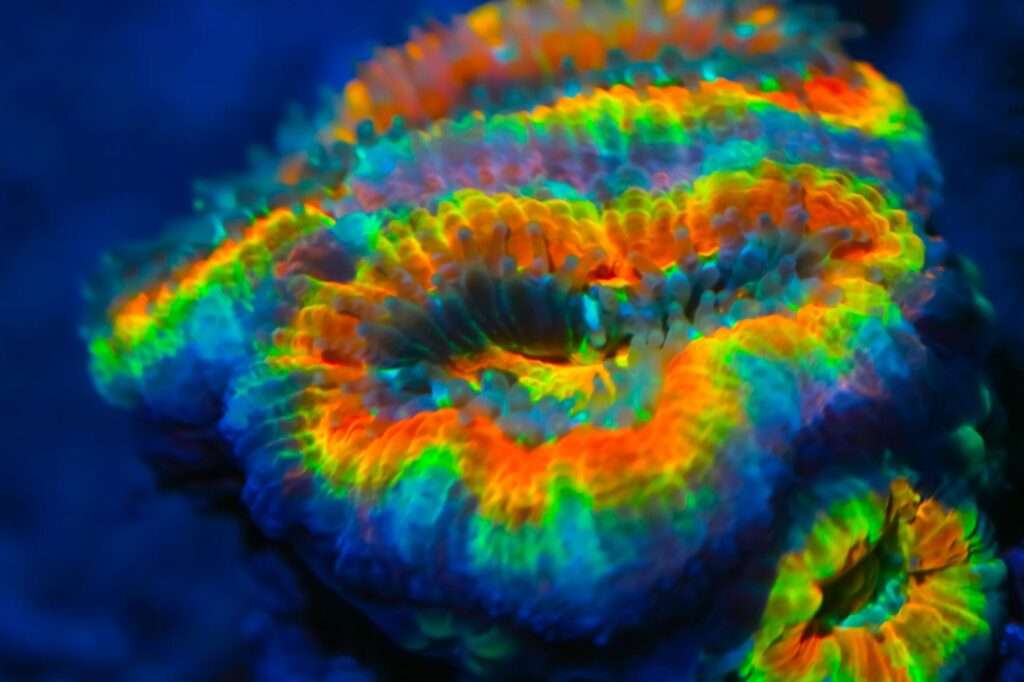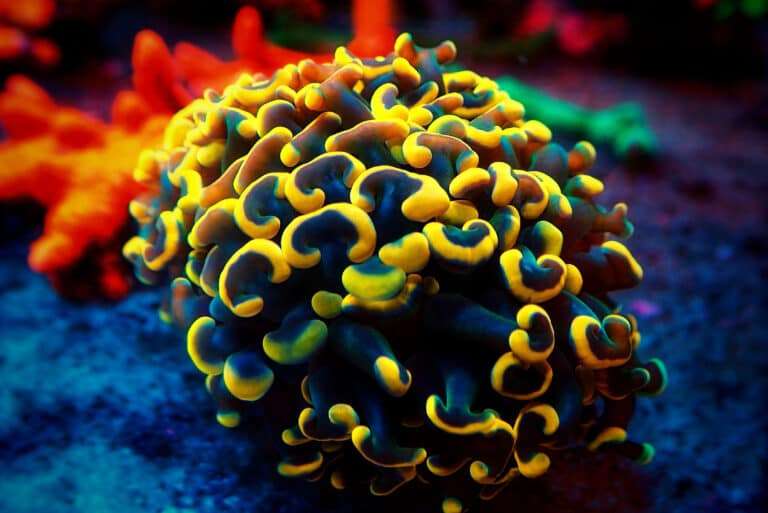
The large polyp stony (LPS) coral frogspawn coral Euphyllia divisa is unquestionably a fan favourite. The multicolored tips and slithering tentacles create for a pretty spectacular display when combined. The scientific name refers to the fact that the polyps have divisions at the end.
The polyp’s form, rather than its delicate skeletal structure, is what most accurately identifies the E. divisa. The Frogspawn Coral comes in a variety of hues. Tentacles can be tan, brown, green, or yellow, with pink, lavender, white, or cream-colored contrast tips. Grape coral is occasionally a misleading name for frogspawn coral. The Grape coral, Euphyllia cristata, on the other hand, has completely straight tentacles with a single contrasting tip rather than branching polyps.
Habitat
Veron and Phichon first described the Frogspawn Coral Euphyllia divisa in 1980. E. divisa can be found in the Philippines, Indonesia, Fiji, the Great Barrier Reef, and the Houtman Islands near Australia. The E. divisa can be found in depths of 131 feet on muddy soils and reef slopes (40 m). In mild, murky waters, they establish tiny colonies and thrive in indirect, bright light. Additionally, they have stinging cells that they use to defend themselves from predators and to assist them catch small prey.
Morphology
The frogspawn’s identification Coral E. divisa is primarily identified by its polyp shape rather than by its delicate skeletal structure. With the ability to fully retract into the skeleton, the polyps form enormous colonies with corallite walls growing on the outer borders. Only partially throughout the night do polyps extend.
The Frogspawn Coral’s tentacles branch with both single and “double” skeleton heads and feature thick, lumpy long polyps with tiny “tips” sprinkled along their length. The length of each tentacle can increase by two to three times when the animal is feeding. Some colonies can grow to be over 3 feet tall (1 m). Unknown life expectancy.
In Captivity

- Feeding
Euphyllia corals have evolved a number of feeding techniques. Many of its nutrients are obtained through a symbiotic interaction with a sea algae called zooxanthellae. They can also take in dissolved organic substances and planktonic creatures as well as food particles from the water column.
Surprisingly, these corals can also consume significantly bigger portions of food. Feed the coral the whole organism by chopping or dicing up whole fish or shrimp. Because different animal parts have varied nutritional characteristics, feeding your Euphyllia in this manner will provide positive effects. Since these corals are constantly hungry, feeding them as needed with a variety of meals is beneficial.
- Social Interactions and Compatibility
Euphyllia corals need to be maintained separate from all other corals because they can become aggressive if they come into touch with another coral. The Frogspawn Coral is hostile to other members of its family but not to members of its own genus. When they are hungry, their sweeping tentacles can expand in size to over 10″ (25 cm) in length in massive colonies, harming nearby corals with their deadly sting. Frequent feedings will aid in resolving this problem.
The tentacles of the Frogspawn Corals, which will sting surrounding corals to clear space for greater growth and to produce delectable meals, provide shelter for some commensal shrimp. Large aquariums with collections of soft corals, particularly some Sinularia species, seem to be problematic for the E. divisa.
Table





